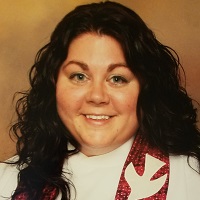“I’m not qualified to preach on science and faith.”
This statement is more common than I would like to admit. I have even — true confessions — avoided the challenge by saying it myself. But we can bring science in and today I want to offer two preaching tools to tuck into your belt: First, a few concrete tips on easy ways to gain reliable knowledge, and therefore confidence, on scientific advancements. I’ll follow that with examples from my own preaching on how to theologically integrate science and faith.
Where to find reliable scientific information
- Find a copy of Discover magazine’s January/February issue featuring the previous year’s Top 100 advances in science. Then let it sit right next to your biblical commentaries as an easy-to-check resource to integrate science.
- If you have chemists, farmers, biologists, geologists, medical people, science teachers or other scientists in your congregation, engage them! Learn from them.
- Google scientific advancements taking place in your area.
- Get on an IRB (Institutional Review Board) at a local university or hospital. They are always looking for non-scientists and especially clergy.
- Visit luthscitech.org (website of the Lutheran Alliance for Faith, Science, and Technology) and sign up for the monthly online magazine Covalence. Check out all the faith and science resources they offer.
- Check out the brand-new curriculum, “A Cosmic Adventure through Science & Faith,” featuring astrophysicist Paul Wallace. It’s aimed at confirmation-aged youth and is a funny, four-part video series that is free for download.
Integrating science and faith: A few examples
Insight: We are dust.
Scripture: Genesis 2:7 and Genesis 3:19
Scientific fact: “… it is only in an ‘older’ universe that complex life forms can come into being. Based on the analysis of minute grains found associated with meteorites, it is suggested that our solar system was enriched by ‘at least four different stars. A star rich in carbon, a star rich in oxygen, a star rich in magnesium and silicon, and a star rich in iron.’ Clearly, our glorious star was generously endowed with the materials needed to build living things. Together with a liquid medium such as water, complex life-forms built largely by the common and versatile carbon atom also require a variety of heavy elements to act as the energy centers of their most critical enzymes … Humankind is the product of that history; hydrogen, the original stuff of the universe, makes up about 8 percent of our body weight — all the rest of us is stardust.”1
Theological reflection: We are stardust! All of the living things on this earth are a product of the elements Burger describes. Look at yourself! There are times you may not feel like you fit into this world as you seek for meaning and purpose. But, even science shows us how connected we are to all of creation and to one another. You are a beautiful, wondrous, gift of God’s love!
Insight: Let weeds grow among wheat.
Scripture: Matthew 13:24-30
Scientific fact: Trees actually communicate with one another through their roots! This allows the forest to respond as if it is a single organism, even sharing nutrients through an underground pipeline that connects one tree’s root system with another’s. Check out Suzanne Simard’s TED Talk on how trees talk to each other.2
Theological reflection: Yes, we live in a world with wheat and weeds. Jesus didn’t uproot what society considered to be weeds. He sat with them. He healed them. He ate with them. And as for the weeds in his own life, Jesus prayed, leaned on his friends, ultimately went to the cross because of the weeds. But good news: God resurrected him! It’s true.
So, maybe instead of using all our energy to pull the weeds that are choking us we should start using our God given connected healthy root system to become one organism “that they all be one” (John 17: 21). Christ plants us the church as a forest and we can send to one another what we each need to be healthier, stronger, and more fruitful.
Insight: I am the gate.
Scripture: John 10:1-10
Scientific fact: CRISPR Cas-9 is a gene-editing tool. It has the potential to heal genetic diseases like Huntington’s by cutting and pasting DNA. It also has the theoretical potential to remove HIV from the infected cells, diagnose diseases more effectively and cheaper, and could change the world of antibiotics. Scientists are working on a CRISPR pill that can make bacteria destroy itself by targeting specific bacteria rather than killing everything. Check out Jennifer Dounda’s TED Talk about CRISPR Cas-9.3
Theological reflection: The Greek word translated as “saved” in the Gospel of John is sozo. Sozo can also be translated as “healing.” As you read John, each time the word saved is read you could change it to healing. “I am the gate. Whoever enters by me will be healed, and will come in and go out and find pasture. The thief comes only to steal and kill and destroy. I came that they may have life, and have it abundantly.”
What if Jesus wants you to know that there are realities out there that come to steal and kill and destroy: busy-ness, debt, worry, depression, addiction, abuse of power, and Jesus just wants to give you pasture. Today. What if Jesus as gate is more about being healed today and not just about heaven when you die?
I’m guessing science and technology actually can sneak into your preaching naturally. We preach about health, sickness, addiction, environment, screen time, social media, and death. The interesting thing is you’re likely preaching on the topic more than you realize! Just remember to include some facts — identified as scientific insights — so your hearers can understand that faith and science are not inherently opposed to one another.
Editor’s note: Luther Seminary’s Mid-Winter Convocation will focus on the theme, “Faith and Science” January 24-26, 2018. Join Andrew Root, Lea Schweitz, Grace Wolf-Chase, Alan Padgett, and others as they explore ways to bridge the gap between theology and scientific inquiry.
Notes
1 Burger, W. C. Perfect Planet, Clever Species: How Unique Are We? (New York: Prometheus Books, 2002).
2 Simard, S. (July 22, 2016). “How trees talk to each other.” https://www.ted.com/talks/suzanne_simard_how_trees_talk_to_each_other/transcript
3 Doudna, J. (September 2015). “CRISPR-Cas9.” https://www.ted.com/talks/jennifer_doudna_we_can_now_edit_our_dna_but_let_s_do_it_wisely

